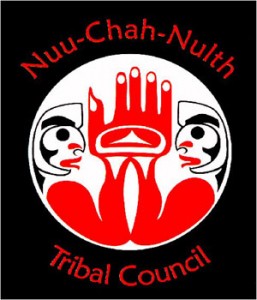Although the execution is not completely perfect, this premise is very strong http://www.nuuchahnulth.org/language/language.html. The basic idea is to offer both a written and audio dictionary (more like a phrase book) related to the language. I have heard that this effort was driven almost entirely by the Nuu-Chah-Nulth themselves. I will be carefully watching to see if there are further updates or releases and likely following up to find out more about this project. It may be of particular use to those folks in the class working on language preservation projects. And incidentally, the band’s newspaper, the Ha-Shilth-Sa, is a great little piece of community journalism at work. You can check that out here: http://www.nuuchahnulth.org/tribal-council/hashilth.html
Day: October 14, 2010
Ryb/Mod2 Weblog
A paper prepared in collaboration of Indian affairs 2002.
http://www.usask.ca/education/people/battistem/ikp_e.pdf
Part 1 outlines the bipolar view of Eurocentric knowledge vs Indigenous knowledge. Originally indigenous knowledge was pushed out because it did not fit into our scientific belief system, or our school system for that matter. Slowly, respect for indigenous knowledge is gaining ground along with ways to integrate it into our Eurocentric school system.
Part 2 more specifically outlines the parameters of indigenous knowledge, and how such learning really does not fit into our current school system. As a high school teacher myself I can testify this to be very true, sad but true. Vales are deeply imbedded into indigenous knowledge, making them hard to quantify or distinguish from morals. Indigenous learning is viewed in a more holistic fashion, with the learner setting the course for learning dependant on personal circumstances and interests. This section very clearly outlines the key concepts of indigenous knowledge and in itself is a very worthwhile section to read.
Part 3 presents a conclusion and recommendations for change. At least this gives a framework for change. Like all change, taking steps forward, even small steps, will require determination and time.
Aboriginal People in the Movies
http://www.paperlw.net/html/Movies—Tv/200807/21-4976.html
This is a very well written article chronicling how the motion picture industry has been responsible for many of the stereotypes of the North American Indian. Starting with the role of the Indian in silent movies, how the Noble Red Man changed into the Savage as film and native involvement evolved. The article recounts has certain cinematographic techniques were used and developed to further these stereotypes. The political native activism movement in the late 60’s have been critical in identifying the inferior roles played and given to natives. They have been less successful in erasing these stereotypes. The article ends with an optimistic look as recent contemporary movies depicting Native Indians, as well as several links for addition reading. The article offers a concise overview of how movies have stereotyped the North American Indian and neatly summarizes many of the key topics of discussion in Module 2.
Climate Change… the old and the new
http://ourworld.unu.edu/en/indigenous-innovation-at-vanguard-of-climate-change/
Indigenous people have always had the best knowledge of the land that sustains them. They are most adaptable to change as they have been adaptable to change for millennia. This article chronicles some of the ways in which indigenous knowledge has been used to help combat climate change, most specifically caused by man himself. There are several cases where indigenous knowledge has been linked with “scientific knowledge” in way that is beneficial not only to the indigenous community but also the “outside” community at large.
This article also provides links to related information, the use of “GPS and the Inuit”, and how knowledge from the local “bininj” is helping control wildfires and reduce greenhouse gasses by as much as 100,000 tonnes per year (complete with a short video, native language, english subtitles)
The UN recognizes indigenous knowledge
Indigenous peoples are among the first to face the direct consequences of climate change, owing to their dependence upon, and close relationship with the environment and its resources. Climate change exacerbates the difficulties already faced by indigenous communities, including political and economic marginalization, loss of land and resources, human rights violations, discrimination and unemployment.
Although they contribute very little to the underlying causes of climate change, indigenous peoples are helping enhance the resilience of ecosystems they inhabit and are interpreting and reacting to the impacts of climate change in creative ways, drawing on traditional knowledge and other technologies to find solutions which may help society at large to cope with impending changes. (Opening press release for the Seventh Session of the United Nations Permanent Forum on Indigenous Issues)
Watch this short video to set the tone for the conference!
http://hub.witness.org/IndigenousMedia
Now to the UN website.
http://www.un.org/esa/socdev/unpfii/en/session_seventh.html
This is remarkable. This website provides a link to all the proceedings from the conference. Of special interest are the press releases (patience, they take a few seconds to load up). Look at the “Handbook for Participants”. The cover features a North American Indian in full headdress, while page 28 offers a website for participant who need a hotel room. Even in its effort to address indigenous concerns, the UN gets caught in the “stereotype” game.
A look at the start of Indigenous media….. newspaper and radio
http://www.abc.net.au/rn/learning/lifelong/stories/s1174633.htm
Part Nine of the “Cultures of Journalism” series exploring Journalism in Australia, produced and hosted by Donna McLachlan. Donna interviews the pioneers of Indigenous media, starting with black newspapers in the USA, and focussing on movers and shakers of the indigenous media in Australia and the Pacific. The message is much the same as the plight of the indigenous people in North America, especially in television; starting by trying to counteract the negative and untruthful stories of the dominant white culture. Once a toe-hold into the system is obtained, expanded air-time, expertise with emerging technology, and greater involvement by indigenous people follow. What I found very refreshing is that you can listen to the broadcast via “Real Player”. Hearing the voices and accents of the local journalists helps to reinforce the powerful notion of media as a way to “store and revitalize language”, another positive argument supporting the use of media by indigenous people.
BC Broadband Access Map
Here is a link loosely related to the one of the threads in Discussion #4. The link shows communities in BC that DO NOT have access to broadband.
I was discussing this with an IT Director earlier today and he relayed to me that he has been to three First Nations communities in the last six weeks that actually have broadband access, but didn’t even know it. Apparently companies like Telus can access federal funds to provide this infrastructure to reserves but have no obligation to help the bands get it up and running. You’d think there would be some motivation considering the outrageous monthly rates they charge.
Reginald Bibby from the University of Lethbridge (my old school) has released the findings of his research study concerning Aboriginal teenagers. Unfortunately, the entire study is not available online for free. However, I was able to find a summary of the findings written by the author at http://www.edmontonjournal.com/business/fp/Young+aboriginals+true+colours+same+ours/3662136/story.html
There are some interesting things in it, especially in the light of the interview with Amy Parent that we studied.
The summary of the article states that young Native people are very similar to the general population. The article then goes on to state the differences, which include a much greater spirituality. The survey also states a similar finding about technology.
In the light of the Returning to Gitxaata video, it’s also important to note that the research has been released for sale privately, or in summarized form in newspapers. It was touching to see the response of the people when the UBC team returned with their research. Unfortunately, this did not happen in this case. While the nature of the research was different, surveying a demographic across different nations, it still would have been nice to see an attempt to bring the results to the people concerned.

